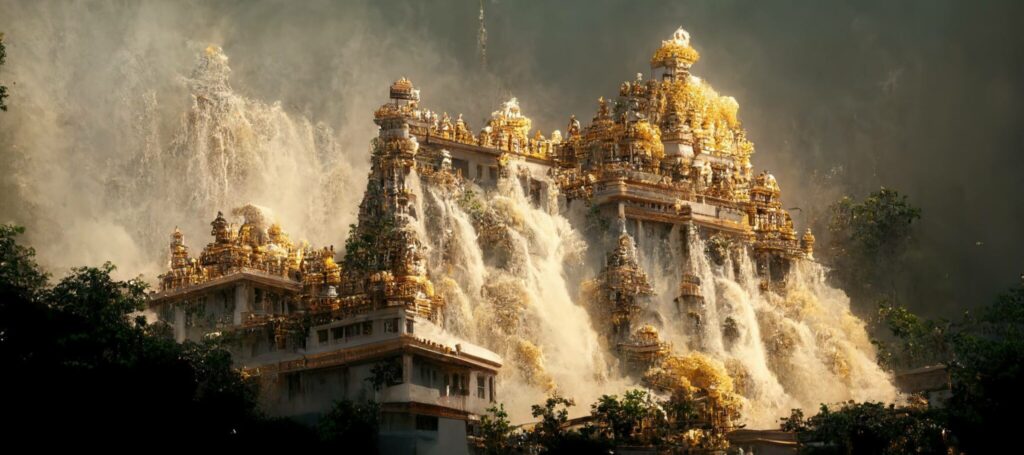The White City: A mysterious lost “City of the Monkey God” discovered in Honduras
The White City is a legendary lost city of ancient civilization. The Indians see it as a cursed land filled with dangerous deities, half-gods, and abundant lost treasures.
Did the ancient inhabitants of Honduras once live in a city made completely out of white stone? That’s the question that has confounded archaeologists for centuries. The White City, also known as the City of the Monkey God, is an ancient lost city that was once buried beneath thick layers of rainforest.
It wasn’t until 1939 that explorer and researcher Theodore Morde discovered this mysterious place with its buildings constructed entirely from white stones and gold; then again, it is lost in time. What mystery lies in the depths of the Honduran rainforest?

The White City of Honduras
The White City is a mythological lost city with white structures and golden effigies of a monkey god in the heart of an impenetrable jungle in eastern Honduras. In 2015, a supposed discovery of its ruins sparked a heated debate that continues to this day.
The story revolves around macabre mysteries, such as the strange deaths of its explorers. According to the Pech Indians, the city was erected by gods and cursed.
Another related folklore speaks of arcane deities half human and half spirit. The citadel is also known as the “City of the Monkey God”. It is expected to be found in the La Mosquitia area of Honduras’ Caribbean coast.

The White City: Brief review of the legend
The White City’s history can be traced back to Pech Indian traditions, which describe it as a city with massive white columns and stone walls. It would have been built by the gods, who would have carved the massive stones. According to the Pech Indians, the city was abandoned due to a powerful Indian’s “spell.”
Honduran Payas Indians also speak about Kaha Kamasa, a sacred city dedicated to the monkey god. It would include monkey effigies and a massive golden statue of a monkey god.
The legend was heightened during the Spanish Conquest. The Spanish conquistador Hernán Cortés, who led an expedition that caused the fall of the Aztec Empire and brought large portions of what is now mainland Mexico under the rule of the King of Castile in the early 16th century, recognized the statue, mentioning a large amount of gold in the citadel. He searched the jungle but never found the White City.
Theodore morde’s exploration and his unexpected death

Theodore Morde was a well-known explorer who explored the forest of La Mosquitia in pursuit of the White City in 1939 and unearthed thousands of artifacts during his extensive expedition. Morde claims to have found the citadel, which would have been the capital of the Chorotegas, an earlier tribe than the Maya:
At the entrance was built a pyramid with two columns at its sides. In the right column an image of a spider and in the left that of a crocodile. At the top of the pyramid carved in stone, a colossal statue of a monkey with an altar for sacrifices before made in the temple.
It seems that Morde discovered the walls, which were overgrown yet in decent shape. Because the Chorotegas were “very skilled in stonework,” it is quite possible that they constructed right there in Mosquitia.
Morde makes an interesting comparison between the prehistoric Mono-God and Hanuman, a monkey deity in Hindu mythology. He stated that they were really similar!

The explorer also mentions the “Dance of the Dead Monkeys,” a sinister religious ceremony done (or performed) by the region’s natives. The ceremony is regarded as particularly unpleasant due to the fact that monkeys are first hunted and then burned.
According to local legend, the monkeys are descended from the ulaks, creatures consisting of half-human and half-spirit who resemble corpulent man-monkeys. The monkeys were ritually slaughtered in order to warn away these dangerous creatures (they would still live in the jungle, according to folklore).
Morde did not receive more funding to pursue his investigation and, soon after he was found dead at his parents’ house in Dartmouth, Massachusetts, on June 26, 1954. Morde was discovered hanging from the shower stall, and his death was deemed a suicide by the medical examiners. His death sparked conspiracy ideas regarding an intended murder by secret US government officials.
While many theorists later asserted evil forces were behind his death. Although some subsequent reports say Morde was hit by a car in London “shortly” after his Honduras excursion. What deadly secret would there be in the White House to kill a prospective discoverer?
The alleged finding made by National Geographic
In February 2015, National Geographic published that the ruins of the White City had been discovered. However, this information is seen as deceptive and has been criticized by various experts. If it was the famous lost city, it should have held some legend-related sign, such as the huge golden monkey — which has yet to be discovered. What was discovered had to be another of Mosquitia’s countless ruins.
Despite National Geographic’s recent contentious finding, the White City of Honduras remains an unsolved historical mystery. It may just be a tale, yet the Indians describe it vividly. Many ancient ruins have been discovered across Honduran Mosquitia as a result of twentieth-century explorations.